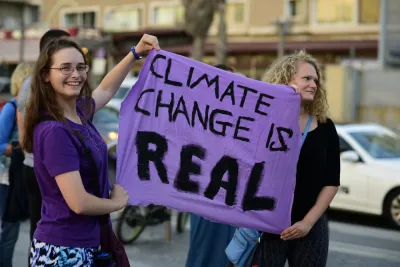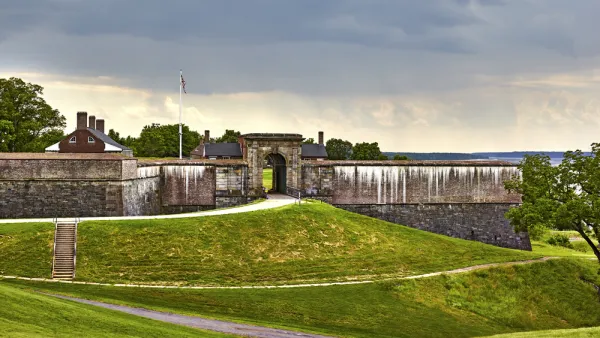If policymakers don't take clear, immediate action, emissions reductions will fall short of the 50-52 percent goal set in Paris.

In an analysis from Rhodium Group, authors John Larsen, Ben King, Emily Wimberger, Hannah Pitt, Hannah Kolus, Alfredo Rivera, Naveen Dasari, Claire Jahns, Kate Larsen, and Whitney Herndon combine their collective expertise "of the US economy, energy systems, and policy design with state-of-the-art modeling tools to comprehensively answer two questions: Can the US cut net GHG emissions by 50-52% by 2030 and if so, what does a policy pathway to the target look like?"
The report finds that "[u]nder current policy as of May 2021, with no new action, the US is on track to reduce GHG emissions 17-25% below 2005 levels in 2030." This "leaves a gap of 1.7-2.3 billion metric tons of emission reductions required to achieve the US target in 2030." The "analysis demonstrates that meeting the US’s 2030 target is achievable, if Congress, the executive branch, and subnational leaders all take a series of practical and feasible policy actions" that include "passage this year of the infrastructure bill and budget reconciliation package in Congress, coupled with a steady stream of standards and regulations by federal agencies and accelerated action by leading states and companies."
The report warns that "[e]ven then, achieving the ambitious goal puts the nation just halfway to the longer-term goal of net-zero emissions by mid-century, which is the level required for the US to play its role in a robust global response to the threat of climate change." The full report, which details "a series of actions that can be reasonably expected to occur over the next nine years if leaders in all levels of government work in earnest to address climate change," can be accessed here.
FULL STORY: Pathways to Paris: A Policy Assessment of the 2030 US Climate Target

National Parks Layoffs Will Cause Communities to Lose Billions
Thousands of essential park workers were laid off this week, just before the busy spring break season.

Retro-silient?: America’s First “Eco-burb,” The Woodlands Turns 50
A master-planned community north of Houston offers lessons on green infrastructure and resilient design, but falls short of its founder’s lofty affordability and walkability goals.

Delivering for America Plan Will Downgrade Mail Service in at Least 49.5 Percent of Zip Codes
Republican and Democrat lawmakers criticize the plan for its disproportionate negative impact on rural communities.

Test News Post 1
This is a summary

Test News Headline 46
Test for the image on the front page.

Balancing Bombs and Butterflies: How the National Guard Protects a Rare Species
The National Guard at Fort Indiantown Gap uses GIS technology and land management strategies to balance military training with conservation efforts, ensuring the survival of the rare eastern regal fritillary butterfly.
Urban Design for Planners 1: Software Tools
This six-course series explores essential urban design concepts using open source software and equips planners with the tools they need to participate fully in the urban design process.
Planning for Universal Design
Learn the tools for implementing Universal Design in planning regulations.
EMC Planning Group, Inc.
Planetizen
Planetizen
Mpact (formerly Rail~Volution)
Great Falls Development Authority, Inc.
HUDs Office of Policy Development and Research
NYU Wagner Graduate School of Public Service





























